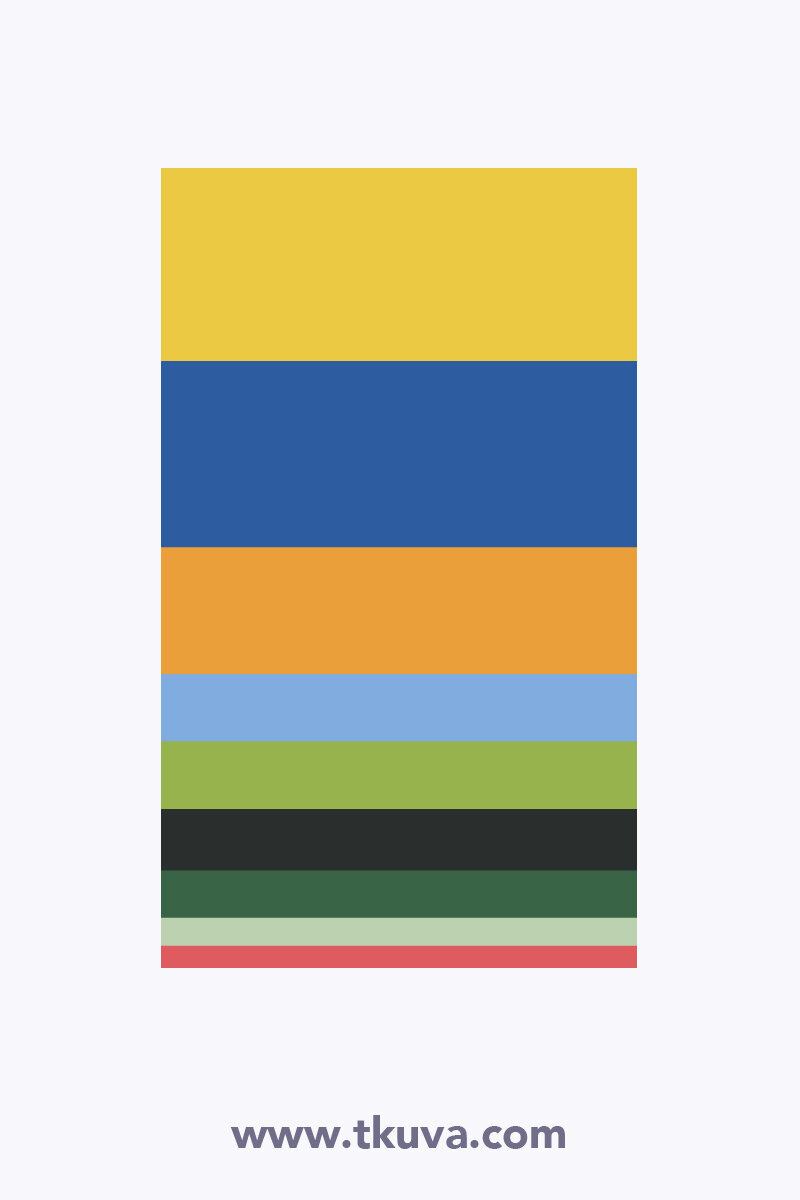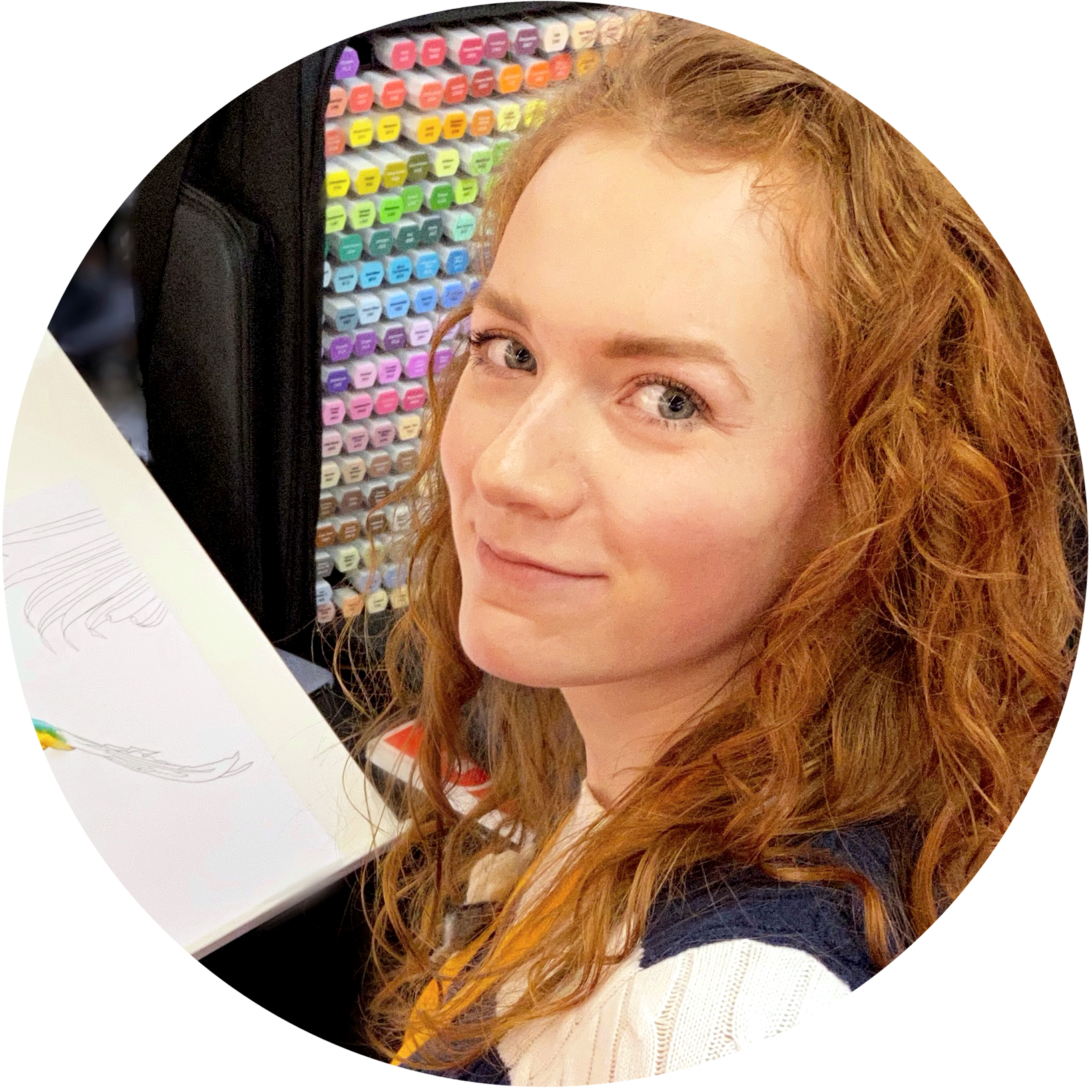Getting Started With Alcohol Markers: 5 Basic Techniques
Don’t have time now? Pin for later!
“How much can you learn in just 2 hours?”
That was the question I asked myself when I was offered to join a live show on Crafter’s TV.
Of course, I was going to use markers for my demonstration, but what should I teach? What should I focus on, and what should I skip?
Ideas were swirling around my head. So much to give and so little time.
I decided to focus on basic techniques adding some of my personal favourites to the mix. The result was a set of 5 alcohol marker techniques for novices who are unsure where to begin.
1. Gradients
One colour gradient
Let’s start with the basics. Shall we? The first and the easiest technique is one colour gradient. What do I mean by one colour? Of course, you need at least 2 markers to create a gradient. It’s easier to start with one family and go on from that. A family refers to the letters on marker caps. When they are the same as CR2 and CR5 for Coral or MG1 and MG3 short for Magenta, then such markers belong to one family. The number after the abbreviation shows lightness. The bigger the number, the darker the colour is and vice versa. Markers from the same family have the same base colour, but its saturation and lightness vary. This makes it easy to blend 2 hues together. For the best result, use either consecutive marker colours like MG1 and MG2 or skip 1 tone and take, for instance, MG1 and MG3.
For further information on this technique, watch a video below showing how to create gradients using a flamingo as an example.
Multi-colour gradient
The first gradient type is fail-proof as the colours will always mix nicely. However, it’s very limiting.
You can also blend different colours together. You should follow the rule of going from light to dark to make it easier. Also, look for colours close to each other like golden yellow and orange, blue and purple, etc. Use a colour wheel as your guide. If colours are next to each other on it, they’ll blend smoother than the ones staying far apart.
Colour wheel
Find details on the technique in the video below.
2. Overlaying and Layering
Another technique that is worth pointing out is overlaying colours and layering. This way, you can create new hues and deepen the existing ones.
I love this technique because it allows you to be creative and experiment with colours. Every time I find a new combination, it’s like finding a hidden treasure.
Below you can see examples of overlaying (left) and layering (right) techniques created with illustrator markers. In the second image, colours in the corners create mixtures in between.
Left: overlaying technique example, right: layering technique, new colour mixtures
I prefer to separate this technique into 2 because, despite the similar concept, the process and the results are vastly different.
Overlaying is a way of mixing colours, but instead of physically blending them, you let them overlap and mix visually. It works because alcohol markers are semi-transparent, so you can see the first layer through the second one. By taking similar hues like blue and blue-green and using the brush nib, you can make the boundary between colours disappear. If a transition between 2 colours doesn’t look smooth enough, apply another layer on top to unite them. You can also use colours that are a bit further apart, like blue and cool pink. By overlaying them, you’ll get a new colour – violet. Look at the artwork below to see the effect of overlaying.
Hydrangea artwork with overlaying technique by Tatiana Kuvaldina
You can see how Overlaying works in the video below.
Layering is a way of creating new colours and deepening the existing one. If you add several layers of the same colour on top of each other, you’ll make a darker shade. For the best results, let each coat dry before applying the next one.
While in overlaying you use similar analogous colours in layering, you can choose even complementary ones. As with the latter, your main goal is to create new colours without the need for a smooth transition.
Colour wheel. Left: analogous colours, right: complementary colours
3. Transparency
In watercolours, you add water to dilute the colour. In alcohol markers, Blender does this job.
There 2 ways to make a smooth gradient with Blender and another marker. You can either apply the colour first and then use Blender to soften the boundary, or you can start with Blender and add colour on top. The second approach requires you to work fast, so the transparent alcohol layer is wet when you add pigment. It’ll help colour to spread a bit on its own.
Transparency is the easiest achieved with light colours. You can also use medium tones, but the result won’t be that smooth. For dark and medium tones, you should do the one colour gradient first and then use Blender on the light hue. This way, you can achieve a smooth, beautiful result.
For this technique, it’s essential to have an extra layer of paper underneath your artwork, because we will be washing away some ink, and it needs to go somewhere. My table is black, so I don’t worry about any stains, but for white and light surfaces, it’s important to keep in mind.
Check out the video below for further information.
4. Spreading colour
This technique is similar to transparency. The key difference is that instead of using Blender, you take another colour.
It’s a great way to mix colours when you want only the edge to be coloured differently, but you still want a smooth transition.
Look at the hummingbird artwork below where this technique was used.
For this technique to work, the edge colour should be darker than the one you use to spread it with. For the best results, take colors with something in common like yellow and orange, blue and cool green. Use colour wheel in sections 1 or 2 for the reference.
There are 2 ways to implement this technique.
Approach 1:
You can apply the edge colour first and then use the second marker to buff the boundary between them.
Approach 2:
Alternatively, you can first apply the lighter colour covering the whole area and then add the darker one on top over the wet ink. So some of the ink will spread and mix on its own. If it’s not enough, you can add some of the lighter colour on top. You can see the difference between 2 approaches here on the Techniques card. The bottom part is made using the 1st approach and the top one using the 2nd.
I usually use this effect for shadows, when I want to separate one part from another like petals or feathers.
Take a look at the technique in the video below.
4. Complementary colours
5. Light dots
I like how fun this technique is. It can turn any background into alive and moving. Just look at the artwork below.
You can also use it for practical reasons if you covered something you shouldn't have and want to wash the ink off.
Here it's crucial to have an extra layer of paper underneath, as we'll be washing away ink, and it needs to go somewhere. You may even have to move the artwork around a bit.
You can use a fine nib for making small dots and a brush for bigger ones. Just move the marker in circles until you get the desired effect.
However, please, keep in mind that you can't make paper entirely white again. There will be some colour residue left.
For more details, watch a video below.
I hope you learn something new today. Do you still have any questions left about marker techniques? Let me know in a comment below.
P.S. If you find this post useful, subscribe to get access to all free downloadable resources in Library.
Keep creating!
Yours,
Tatiana
You might also enjoy
Hello!
My name is Tatiana Kuvaldina.
I am a colour expert.
My purpose is to help creatives like you to build their confidence one colour exercise at a time.
Let’s talk more on Instagram
Find me @tkuva_illustrates


























